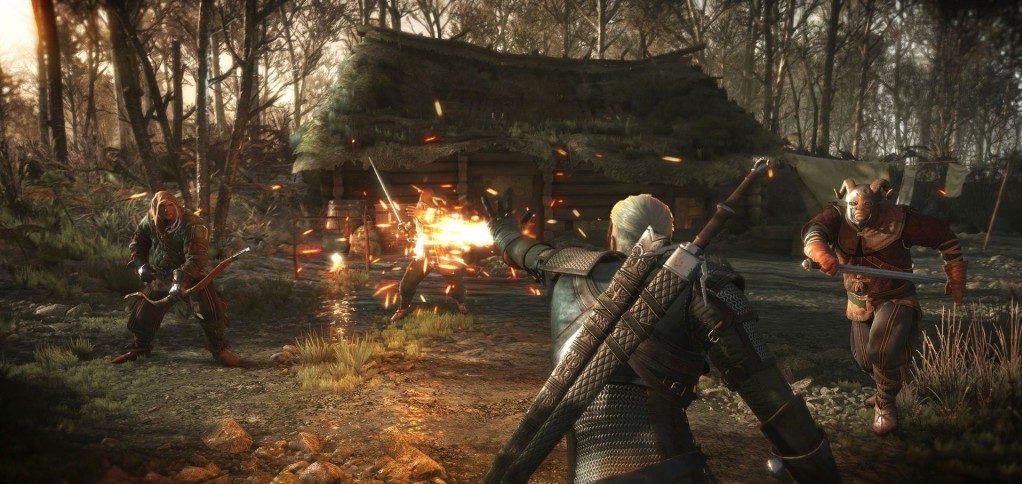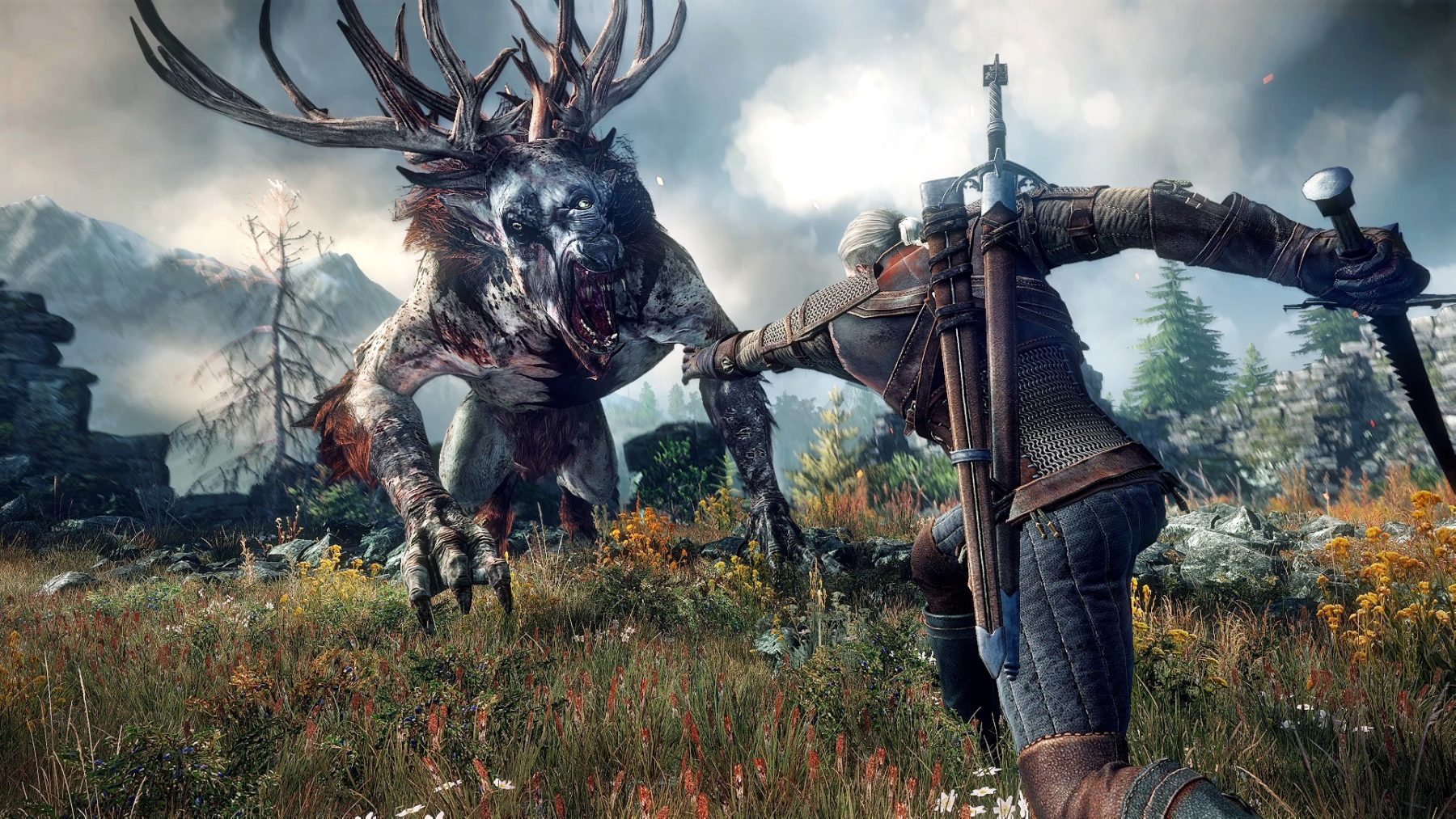The Witcher 3: Wild Hunt Review
[dropcap]I[/dropcap]t’s hard to know where to begin with The Witcher 3. This is, after all, a game with a map 20% larger than Skyrim’s, beards that grow in real time (yes, really), and more monsters than you can shake a silver sword at. Legends of the game precede it, but the reality more than lives up to expectations. The graphics are stunning, the combat is delightfully challenging, and the inbuilt card game, Gwent, gives even Hearthstone a run for its money. But the success of this beautiful RPG comes down to something a lot more simple – storytelling.
[divider]
It seems fitting: the Witcher games began life as books by Polish author Andrzej Sapkowski. They follow Geralt of Rivia, a monster-hunter for hire, whose training enables him to take on even the strongest of supernatural foes. Though this latest instalment takes place after the end of the novels, in many ways the game stays true to its literary beginnings. Each aspect of the game’s plotline, from critical main quests to the smallest side quest, are constructed with astounding intricacy and complexity.
You play as Geralt as he searches for his missing adopted daughter and Child of Destiny, Ciri. Hot (or, rather, cold…) on Ciri’s heels are the eponymous Wild Hunt, supernatural foes that leave devastation and ice in their wake. On the way, you’ll fight enormous griffins and basilisks, be a key player in the political games that are reshaping the world, try your hand at wooing one of the several romance options, become a trading card master and make both lifelong friends and sworn enemies.
 Despite the intricacies of the plotline, it’s really not necessary to have played the first two instalments in the series, but if you are a die-hard fan you’re still provided for, with the option to enter the choices you made in previous games before embarking on the adventure. If you’re desperate to catch up, the novels actually provide a good introduction to the lore and are all available in English, so you can take Geralt with you on your beach holiday without risking getting sand in your console.
Despite the intricacies of the plotline, it’s really not necessary to have played the first two instalments in the series, but if you are a die-hard fan you’re still provided for, with the option to enter the choices you made in previous games before embarking on the adventure. If you’re desperate to catch up, the novels actually provide a good introduction to the lore and are all available in English, so you can take Geralt with you on your beach holiday without risking getting sand in your console.
Though the main quest line lets the game down a bit at times – feeling just a little too simple for an otherwise hugely ambitious project – it’s solid and enjoyable. To say that the main quest is the weakest aspect of the game is probably correct, but that’s only because of how brightly the rest of The Witcher 3 shines. We’re now in an age where it’s expected that an AAA title will flirt with a major issue or two, and The Witcher 3 is no exception. The 200-hour adventure tackles a host of grandiose themes including war, politics and the treatment of women. But what’s most exciting is how deeply the game delves into the smaller stories. NPCs have complex back stories that slowly come to life, and nothing is immediately as it seems; a simple quest to kill a troublesome wraith unravels to tell a story of murder and lost love, while an attempt to find a missing person unearths a secret love triangle. Wild Hunt’s graphics are stunning, with gorgeous landscapes, elaborate character design and genuinely fascinating monsters. Yet the world is filled out aurally as much as it is visually, with a wealth of stories tying together to make the world feel deeper and more real than ever before. Though the main narrative can at times dissolve into banal fetch quests (being delegated to finding a missing goat feels pretty demeaning for a monster slayer extraordinaire), the complexity and accessibility of these stories saves the game from ever becoming dull or repetitive.
What’s exciting is how deeply the game delves into smaller stories; a simple quest to kill a troublesome wraith unravels to tell a story of murder and lost love, while an attempt to find a missing person unearths a secret love triangle.
Storyline aside, the combat system is excellent. With four difficulty levels to choose from, Witcher 3 is playable by seasoned Dark Souls master and casual gamer alike. The somewhat alarmingly named ‘blood and broken bones’ difficulty level provides a good, constant level of challenge without becoming frustrating, and as such is well worth attempting. The wide array of monsters all have different patterns of behaviour that must be learned in order to save Geralt from a grisly fate. Water-hags will chuck mud at the screen and obscure your vision, whilst Griffins will swoop and rage unpredictably and keep you on your toes. Success often relies on correct use of magic, swordplay and performance-enhancing witcher potions. This keeps the combat consistently exciting and fresh. Refreshingly, the game strikes a good balance between feeling like a really powerful monster-killer and realising that a wrong step can be deadly – Geralt is no Ezio Auditore. Expect some frustration in mastering combat, but a game that feels just challenging enough to be satisfying.
With an estimated 200 hours of gameplay, The Witcher 3 is well worth purchasing, even as the end of term three (and the end of your loan…) approaches. The standard edition of the game comes packaged with a map, soundtrack CDs, stickers, lore booklet, and even a thank you note from developers, a really nice touch that brings back the excitement of buying a physical copy of the game rather than a digital download. A few minor glitches, slow menus and a slightly disappointing main plotline are only very minor faults in an otherwise spectacularly well-made game. The Witcher 3 is sure to be a strong contender for Game of the Year, and should definitely be a part of any RPG  lover’s library.
lover’s library.
[divider_top]
What did you think of The Witcher 3? Let us know @boargames


Comments